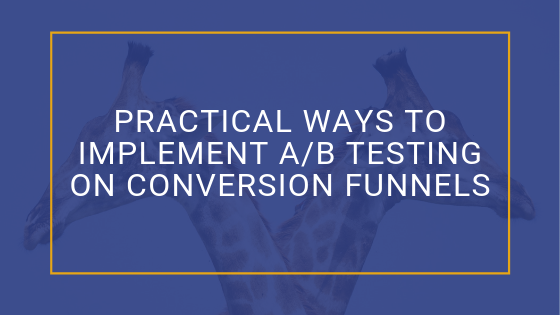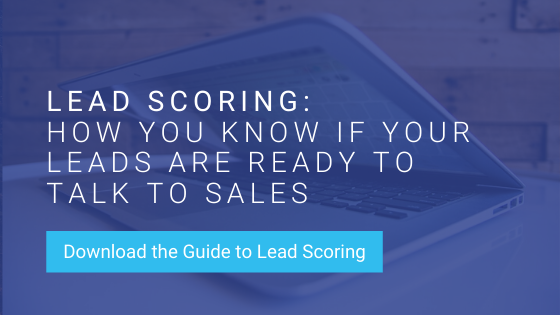A conversion funnel is what we call the path a user follows to convert on a landing page. You can read more about the basics here, but the parts that make up a conversion funnel are the CTA, Landing Page, Thank You Page, and the Thank You Email. As marketers and business people, we want people to convert, but sometimes our marketing underperforms or our guts say that good performance could be better. So then we test. Here are practical ways to implement A/B testing on conversion funnels and improve their performance.

A/B Testing CTAs
CTA testing in HubSpot could not be any easier. By creating two versions of your CTAs- A and B- HubSpot will naturally serve the CTAs equally. When running multivariate CTA testing, we’re focusing the majority of our attention on the Click Rates because clicks are the main goal of a CTA. Submission rates are a secondary factor because they are mostly an indication of your landing page performance. The caveat here is relevance, though. High clicks and low submission rates can be an indication that the promise of your CTA is incongruent with that of your landing page. The messaging of one or the other may need to be adjusted.
In this example, version A and B were created at the same time. After a few months of testing, both have nearly identical views, but the clicks on version B are a full percentage point higher. At this point, since we have a decent amount of data, it might be time to create a new version “A” to see if we can beat or at least match version B.

A/B Testing Landing Pages
HubSpot also makes implementing A/B testing on landing pages super easy. What you’re looking at when testing landing pages are submissions. WordStream tells us we want 10% or higher to be considered among the best. Some of the things you could vary are your headlines and copy. You can even try testing the medium of your offer- guide vs eBook vs infographic etc.- to see what your audience is more compelled to utilize.

One of the biggest advantages to A/B testing a landing page is to see how the length of a form affects your submissions. As marketers, we of course want as much data as we can get, but we also know that there’s a breaking point in what we request. High-value offers have a higher threshold for longer forms. To test, create two variants of your landing page- one with a shorter form and one with a more complex form- to find out where your persona’s threshold is. If you can get away with having a longer form and requesting more information without your submissions rates suffering, go for it.
If you’re not sure where to start with your landing page testing, you can try setting up heat mapping to see exactly how your users are interacting with your page. You might find people are leaving right away (a better headline or more appealing design, perhaps?) or abandoning the form (shorten that sucker up!). Bounce rates can also indicate where to start.
Bonus: are your landing pages optimized for SEO? Learn more about it here.
A/B Testing Thank You Pages
You create Thank You Pages (TYPs) variants the same way you do Landing Pages in HubSpot. So what are you looking for here? Engagement. You want people to access their offer (via a link or a button) and then go on to engage with the site. This is where you have the opportunity to move them through the funnel or charm them with delight. You can create full variants of your TYP or try testing a CTA within your TYP as we discussed above.
A/B Testing Thank You Emails (Kind of)
Thank You Emails are the automated emails that send after a user submits a form. They can be set up directly on the landing page form or via a workflow. Unfortunately, you cannot implement A/B testing of automated emails in HubSpot. But, there are a few ways to get around it. What you want to measure by testing thank you emails are your open rates and click rates.

Open rates are correlated to the strength of your subject line. To test, benchmark your current views and opens then manually make and publish your updates to the same email. Allow your updates to gather data and then measure performance against your benchmarked data. Rinse and repeat.
You can test the click rates in your thank you emails by creating multivariate CTAs as discussed in the CTA section above. You can also manually update the copy and hyperlinks to your “next step” offer (whatever action you’ve included in your TYE that you want your user to take next such as downloading a different offer or contacting you for a consult). Benchmark your stats and revisit often to check the efficacy of your updates.


